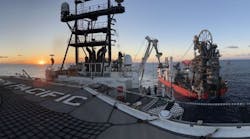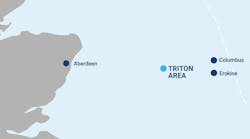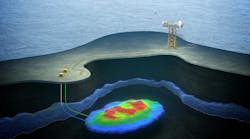Offshore staff
OSLO, Norway – Nexans has introduced a range of ROV tether cables, designated Enable, which incorporate bending-optimized Dyneema fiber as the strength member.
The company claims the development provides a major increase in bending fatigue resistance of tether cables, which should facilitate more cost-effective ROV operations.
The flexible, lightweight cable provides the physical connection between the ROV and its tether management system (TMS), transmitting electrical power and optical signals, and carrying mechanical payloads.
During operation, conventional cables are subject to small bending diameters and relatively sharp directional changes in the TMS, as well as vehicle motions. This causes the synthetic fibers to deteriorate mechanically, resulting in the need for regular re-termination of the ROV tether cable.
With the Enable cables, the aramid fibers previously used as the strength member are replaced by bending-optimized Dyneema fibers. Nexans says extensive fatigue testing demonstrates improved bending durability several orders of magnitude above that of conventional cables.
This means ROV operators can expect a prolonged mechanical lifetime for cables when deployed on existing systems, with increased intervals between re-terminations.
Additionally, use of the bending-optimized strength element should provide greater flexibility in the design of ROV tethers in the range of 20-45 mm (¾- to 1 ¾-in.) outer diameter, said Nexans. One option would be to use fewer strength members to reduce the overall outer diameter.
Another would be to reduce the specific weight offered by the Dyneema fibers to incorporate more copper conductors, lessening voltage drop to achieve longer excursion lengths.
2/15/2013




